If you’re getting abysmal conversions out of your email newsletters, then you need to lean in and read the tips in this guide very carefully.
Contrary to what others say, email marketing is far from dead. In fact, The Washington Post’s newsletters have a 30% open rate, and Greentech Media’s newsletter visitors spend 80% more time on its site.
Among email marketing campaigns, newsletters naturally offer a personalized experience for your subscribers, making it one of your most effective tools to generate audience engagement and sales. To help you engage subscribers effectively, here are good examples of newsletters that you can learn from and build upon.
Our 10 engaging newsletter ideas for your small business
- Post a job alert
- Add a GIF
- Share a how-to guide
- Announce your new product or service
- Greet your subscribers
- Provide case studies and testimonials
- Share your tips and best practices
- Share a blog post roundup
- Send a fun quiz
- Ask for feedback
1. Post a job alert
Use your email list to find ideal candidates for a job position you’re looking to fill. Job openings are great content to send since these are valuable opportunities for your readers.
Your subscribers will respond if they’re interested, or they might share it with someone who’s a good fit. It’s a win-win for you and your email recipients.
LinkedIn’s job email alert is a classic example of email newsletters with job opportunities.
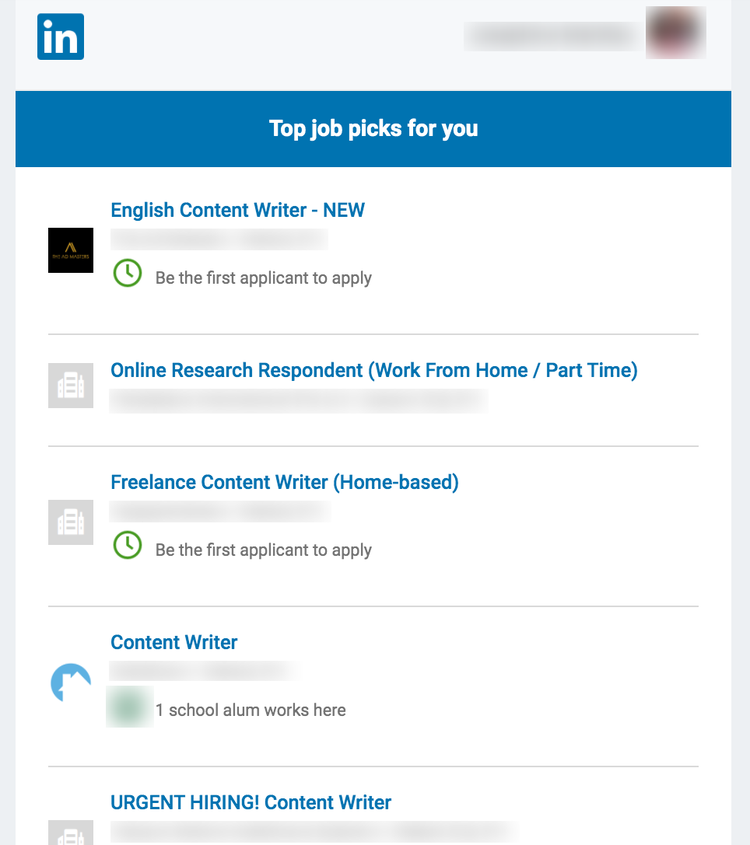
LinkedIn sends job alerts to users based on their work history. Image source: Author
Can you imagine how much value job email alerts have to people looking for employment or a career change? By sharing these, you expose your readers to employment opportunities that can better their lives.
2. Add a GIF
GIFs make email newsletter designs catchier. A remarkable 72% of marketers who used GIFs recorded higher transaction-to-click rates, according to a report by Experian Marketing Services.
Marketers use GIFs to:
- Visually attract readers
- Trigger interest
- Enhance newsletter layout
- Add an element of delight
- Visually support a message
- Insert humor
GIFs are also perfect for sharing excerpts of videos. In its newsletter, RightNow Media used a GIF to introduce their video about facing anxiety.
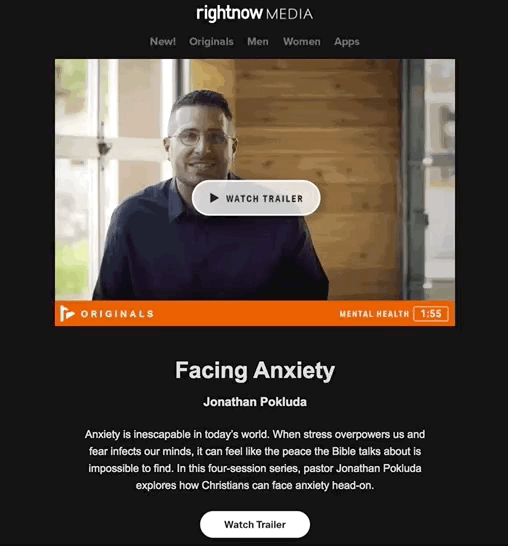
RightNow Media used a GIF to share a preview of its new video. Image source: Author
Keep your GIFs no bigger than 500 KB. The “lighter” the message, the better your email deliverability. Seasoned email marketers adhere to this newsletter best practice to improve their campaigns.
Overall, GIFs give newsletters a friendly, inviting, and humorous feel, making it easier for your audience to engage with your brand.
3. Share a how-to guide
How-to guides are step-by-step instructions readers follow to accomplish certain tasks. In the digital marketing space, for example, sending a guide on how to generate website traffic is very valuable to those who need more relevant and organic web visitors.
In one of its newsletters, Mailchimp used a GIF to explain its redesign interface to its subscribers, as opposed to describing the new interface using several blocks of texts.
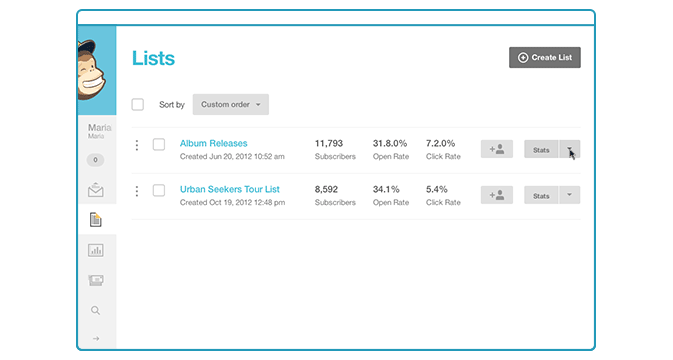
Add GIFs to your how-to newsletters to help your audience clearly understand your message. Image source: Author
With step-by-step instructions in your email, your audience can act on your content and solve their most pressing problems.
4. Announce your new product or service
There is a higher likelihood that your audience will know about your new products or services if you reach out to them through their inboxes. That’s why small businesses prefer to use email marketing for product updates, since the communication method is more direct.
Grammarly did this with their recent product update.
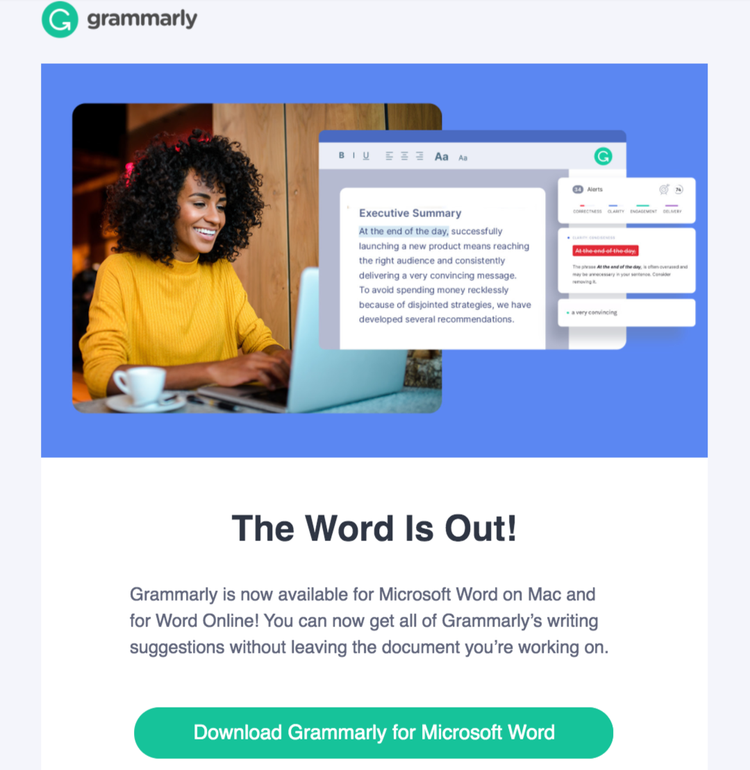
Grammarly announced its new product feature and encouraged its users to download the software. Image source: Author
The newsletter clearly explains their new feature and encourages readers to immediately take action by downloading Grammarly’s new tool.
It’s a simple and effective way to inform your readers about new product features, lead them to take action, and drive traffic or sales to your small business.
5. Greet your subscribers
Send seasonal or special greetings to humanize your brand and let your subscribers know they are valued.
Businesses that send emails during the holidays and special occasions experience 20% more open rates and generate a 50 to 100% increase in revenue. Take advantage of these days to treat your subscribers to special discounts and encourage them to make a purchase.
For example, Lumosity sends birthday greetings and offers special discounts for yearly subscriptions.
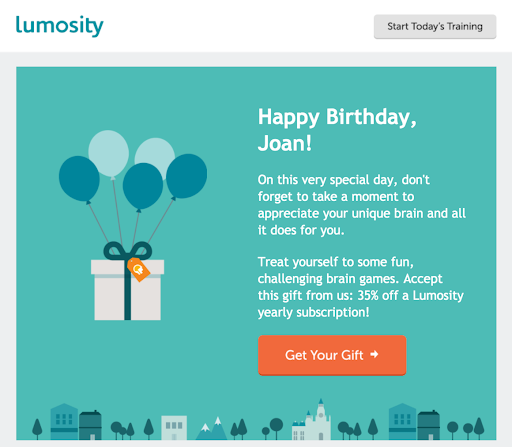
Lumosity offers birthday celebrants a discount for a yearly subscription. Image source: Author
6. Provide case studies and testimonials
Case studies and testimonials serve as social proof for how effective your services are. According to Nieilsen, 92% of people trust recommendations from peers, and 70% trust recommendations from strangers.
Fiverr, for example, shares testimonials from business founders and CEOs about how the platform helped their businesses grow.
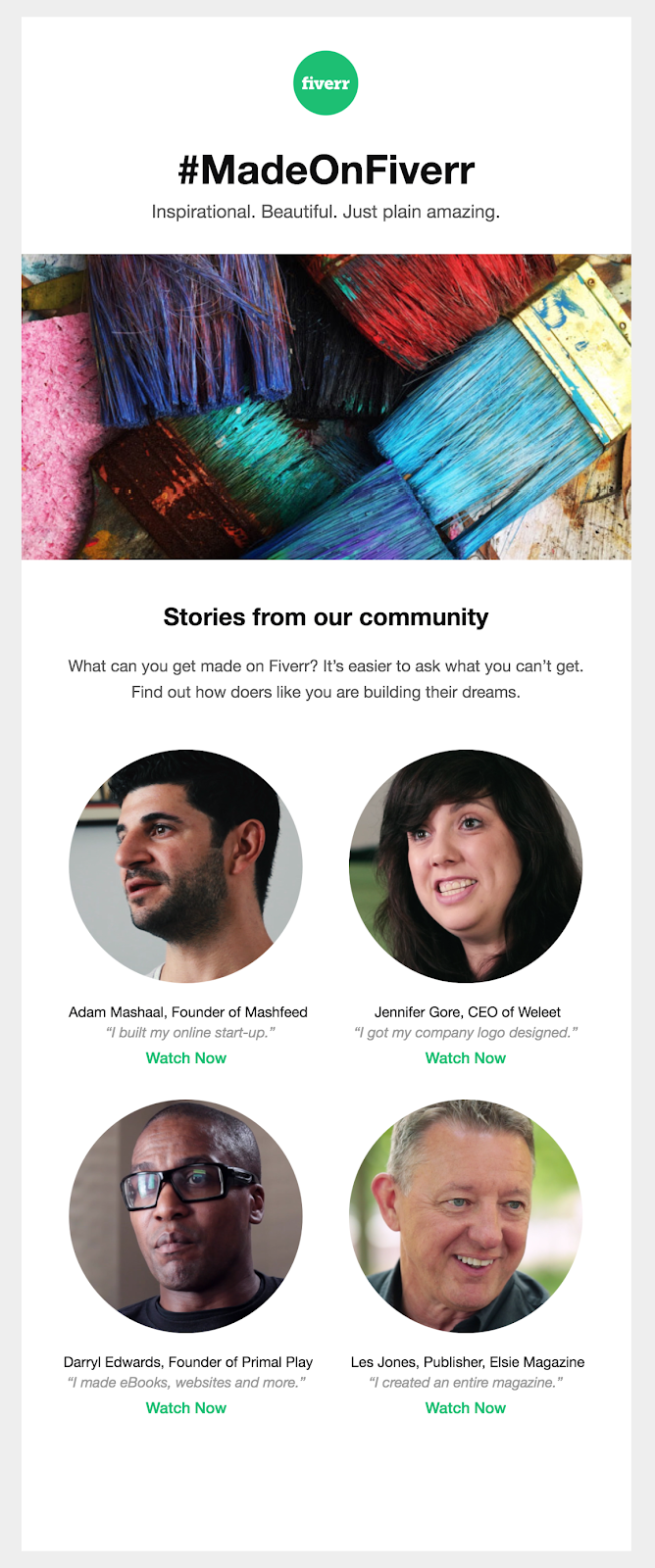
Fiverr shares success stories from businesses who used their platform. Image source: Author
When your subscribers read testimonials from happy customers, they feel more inclined to buy your products or services.
7. Share your tips and best practices
Establish authority and expertise in your field by sharing tips, insights, or best practices. Neil Patel does this masterfully in his newsletters.

Neil Patel’s newsletters contain useful digital marketing tips and strategies. Image source: Author
Neil’s email design is just plain text. The instructions and tips are the focal point of his message. Also, the newsletter has links to Neil Patel’s pages. Linking to your web pages from your newsletters will boost your website traffic.
Before sharing your tips, know what information your subscribers need or find value in. The right content will make your email messages more engaging.
8. Share a blog post roundup
Aside from sending your latest blog posts, share a weekly or monthly roundup of your best articles. Send articles that performed well in the past to ensure they drive engagement and traffic to your email and website.
For example, Medium’s Personal Growth newsletter shares a weekly roundup of their featured articles.
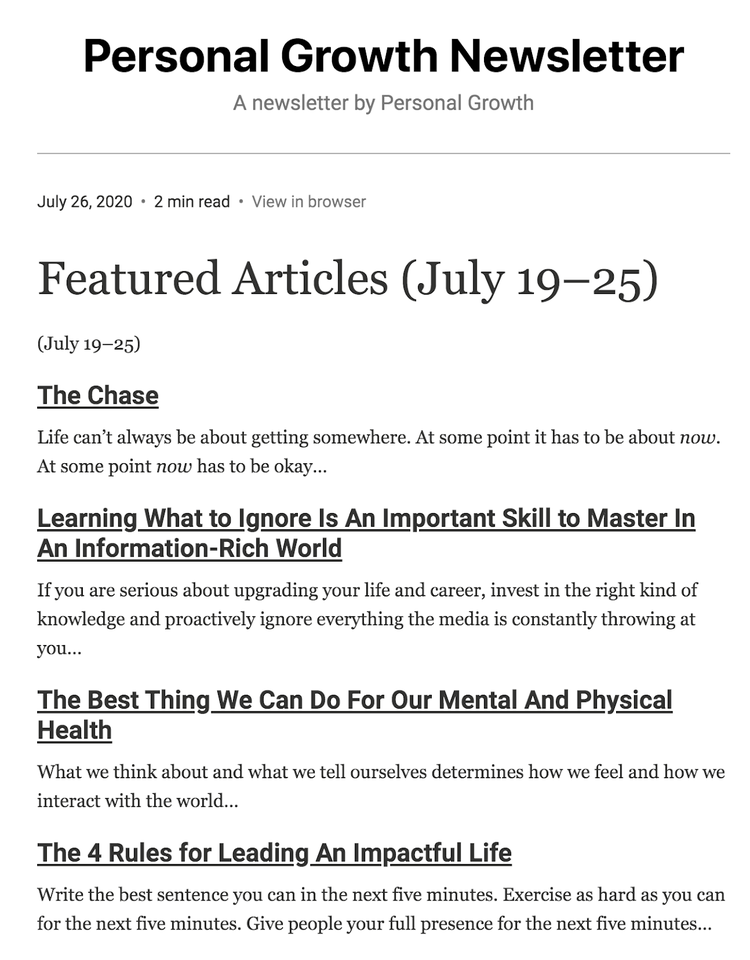
Medium’s Personal Growth gathers all featured articles for the week in one newsletter. Image source: Author
It’s a great way to introduce older posts to new readers, and share posts that your avid readers might have missed.
Add social sharing buttons on your newsletter templates and blog posts to improve the shareability of your content.
9. Send a fun quiz
Buzzfeed’s success with online quizzes has sparked more quiz-type content from marketers.
Adding a quiz to your newsletter can skyrocket your audience engagement, especially if the test is relevant to your business and valuable to your subscribers.
For example, YouVersion sent this quick and engaging quiz a few days before Valentine’s Day.
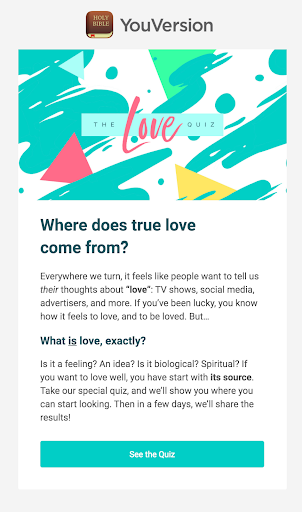
YouVersion sent a quiz to engage and get to know their subscribers. Image source: Author
On Valentine’s Day, they shared the results and mentioned that over 160,000 people participated. That’s how powerful quizzes work when done right!
If you want to know how to make a newsletter with quizzes, ask your email marketing software support team. Or use a third-party platform like Survey Monkey to create the quiz and embed it into your newsletter.
10. Ask for feedback
If you’re running out of newsletter content ideas, why not ask your subscribers?
Here’s how Search Engine Journal (SEJ) requested for feedback about a recent event.
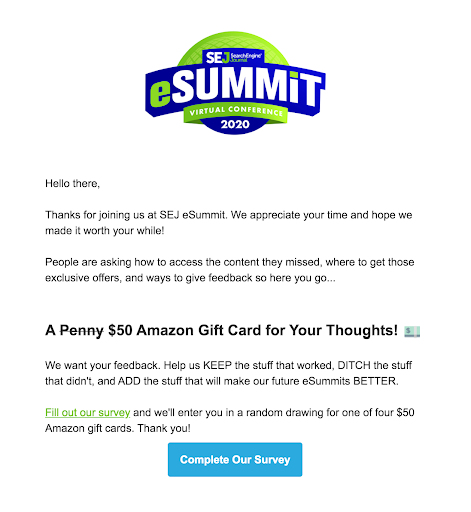
SEJ offered its subscribers a chance to win a $50 gift card for answering a survey. Image source: Author
Offer an incentive when asking your subscribers to fill out a survey. Doing so encourages them to act on your instructions.
Start connecting with subscribers
Here’s the bottom line: Creating engaging newsletters doesn’t have to be rocket science. By following the tips shared in this guide and building upon them, you can develop a high-performing email newsletter campaign that resonates with your subscribers.
Our Small Business Expert
We're firm believers in the Golden Rule, which is why editorial opinions are ours alone and have not been previously reviewed, approved, or endorsed by included advertisers. The Ascent does not cover all offers on the market. Editorial content from The Ascent is separate from The Motley Fool editorial content and is created by a different analyst team.